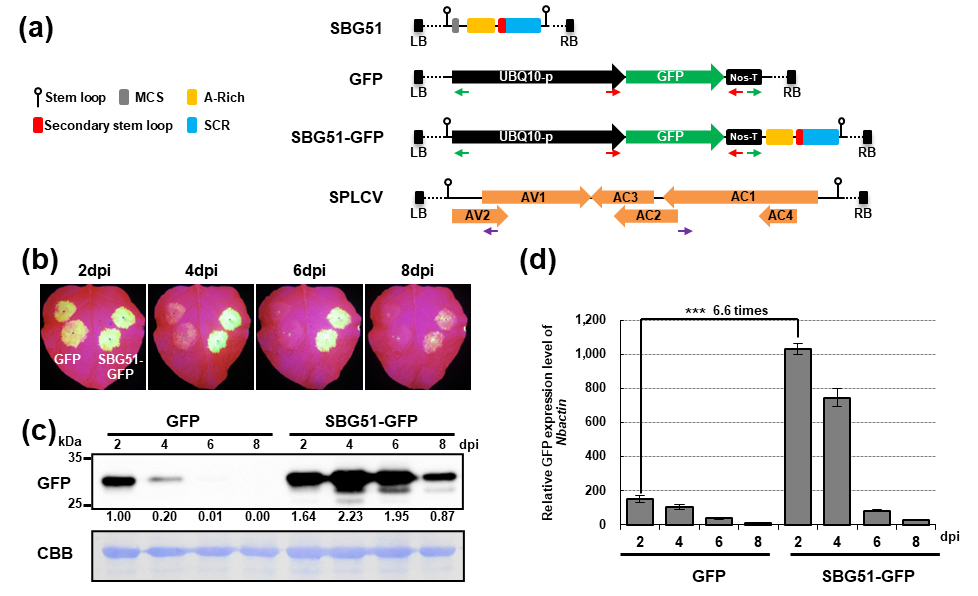Plant Virus Contributes a Novel Gene Regulatory Element
Exploring the new elements for enhancing gene expression is crucial in synthetic biology. A recent study found that the DNA sequence of the SBG51 deltasatellite from the Sweet potato leaf curl virus (SPLCV) greatly enhanced the gene expression when flanked downstream of the terminator. The enhanced gene expression maintained the spatio-temporal expression patterns controlled by promoters. The AT-rich elements are powerful tools for accurately controlling gene expression.
Overexpressing the transgene in plants is not only a strategy to study the gene function and generate genetically modified crops but also provides a promising platform to produce recombinant proteins in industrial or pharmaceutical applications. Exploring the new elements to re-design the expression cassette is crucial. Virus is an important resource to for discovering new gene expression-enhancing elements.
Geminivirus is a large family of plant viruses, which has circular and single-stranded DNA genomes. Monopartite geminiviruses have one circular ssDNA genome and an additional circular satellite DNA. Sweepoviruses, such as Sweet potato leaf curl virus (SPLCV), are a group of monopartite geminiviruses that infect Sweetpotato and cause significant damage.
On 26 December 2024, a study led by Dr. DENG Shulin in the South China Botanical Garden (SCBG) of the Chinese Academy of Sciences (CAS), was published in Plant Biotechnology Journal (IF5years=12.1). This work found that the DNA sequence of the SBG51 deltasatellite from SPLCV greatly enhanced the gene expression when flanked downstream of the terminator.
The SBG51 sequence increased transient GFP gene expression in Nicotiana benthamiana leaves by up to ~6 times and ~10 times compared to the gene expression controlled by the UBQ10 promoter and 35S promoter alone, respectively (Figure 1). Enhancement of gene expression by the SBG51 sequence was independent of the promoter and terminator and the spatio-temporal pattern of the promoter was maintained. Furthermore, researchers found that the AT-rich elements were sufficient and essential for gene expression enhancement.
The first author of the publication, Dr. ZHANG Yi cooperated with Moon (Guangzhou) Biotech Co., Ltd, and investigated the applications of the SBG51 sequence in non-plant systems and synthetic biology. This DNA sequence functioned well in both plants and yeast cells, which provides a novel element to optimize the expression vector and accurately control the gene expression for synthetic biology and gene editing.
This work was supported by grants from Science and Technology Projects in Guangzhou, the National Natural Science Foundation of China, the Guangdong Science and Technology Plan Project , and Beijing Life Science Academy.The link of this article: https://doi.org/10.1111/pbi.14561

Figure .(Image by DENG et al)
File Download: